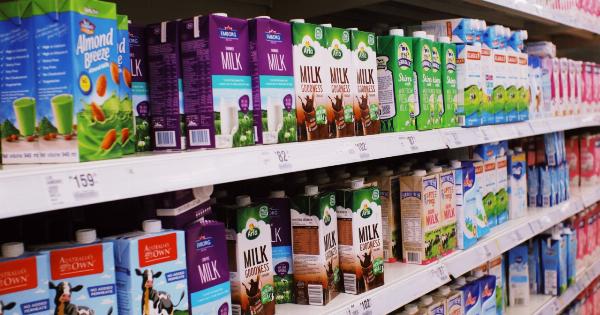Milk is often considered one of the healthiest beverages for children, as it is a rich source of essential nutrients like calcium, protein, and vitamins.
However, like any other food or drink, excessive consumption of milk can have negative effects on a child’s health. Finding the right balance in milk intake is crucial to ensure children receive its benefits without any adverse effects.
The importance of milk for children’s health
Milk plays a vital role in supporting children’s growth and development. Here are some of the reasons why milk is essential for children:.
1. Calcium: Milk is one of the best sources of calcium, which is necessary for building strong bones and teeth. It helps prevent conditions like rickets and osteoporosis later in life.
2. Protein: Protein is essential for the growth and repair of cells and tissues. Milk contains high-quality proteins that support children’s overall development.
3. Vitamins: Milk is a good source of various vitamins, including vitamin D, which aids in calcium absorption. It also contains vitamins A and B12, promoting good vision and a healthy nervous system, respectively.
4. Hydration: Milk consists mainly of water, making it an excellent hydrating beverage for children, especially during hot weather or physical activities.
The risks of excessive milk consumption
While milk offers numerous health benefits, excessive consumption can have some downsides. Here are a few risks associated with overconsumption of milk:.
1. Iron deficiency: Too much milk can interfere with the absorption of iron from other foods, leading to iron deficiency, especially in young children.
2. Reduced appetite: If children fill up on milk, they may not have enough appetite for other essential foods, leading to an imbalanced diet.
3. Dental issues: Prolonged exposure to milk sugars, especially from bottles and sippy cups, can contribute to dental problems like tooth decay.
4. Allergies and intolerances: Some children may be allergic to milk proteins or lactose intolerant, leading to digestive issues, skin rashes, or respiratory problems.
Guidelines for milk intake based on age
The appropriate amount of milk a child should consume depends on their age and overall dietary needs. Here are some general guidelines:.
Infants:
For infants up to 12 months old, breast milk or formula is the primary source of nutrition.
As babies grow, they may start consuming small amounts of whole cow’s milk after their first birthday, but it should not replace breast milk or formula entirely.
Toddlers:
Toddlers, aged 1 to 3 years, can drink about 2 cups (480 ml) of whole milk per day. It is important to give them whole milk as they need the extra fat for brain development.
Preschoolers:
Preschoolers, aged 4 to 8 years, can consume about 2.5 cups (600 ml) of milk each day. Transitioning to low-fat or skim milk can be considered, but it is essential to consult a pediatrician before making the switch.
Children and adolescents:
Children aged 9 and above can continue consuming around 3 cups (720 ml) of low-fat or skim milk per day. It is crucial to ensure they have a balanced diet with a variety of other nutritious foods.
Tips for maintaining a balanced milk intake
To find the right balance in milk intake for children, consider the following suggestions:.
1. Consult a pediatrician: Every child is different, and their nutritional needs vary. Before making any changes to their milk intake, consult a pediatrician to ensure they receive adequate nutrients.
2. Offer a variety of foods: Encourage children to consume a diverse range of foods to ensure they receive essential nutrients from sources other than milk.
3. Be aware of hidden milk: Some foods like yogurt, cheese, and fortified cereals contain milk products. Consider these sources when calculating the total milk intake for a child.
4. Avoid excessive sweetened milk: Flavored milks and milkshakes can contain high amounts of added sugars. Limit their consumption to prevent excessive sugar intake.
5. Consider milk alternatives: If a child is allergic to milk proteins or lactose intolerant, there are various milk alternatives available, such as soy milk, almond milk, or oat milk.
However, ensure they receive similar nutrient profiles.
Finding the right balance for your child
No one-size-fits-all approach exists when it comes to milk intake for children. It is essential to consider the child’s age, overall diet, and individual needs.
By following general guidelines and consulting with a healthcare professional, parents can find the right balance and ensure their child receives the appropriate amount of milk for optimal health.




























